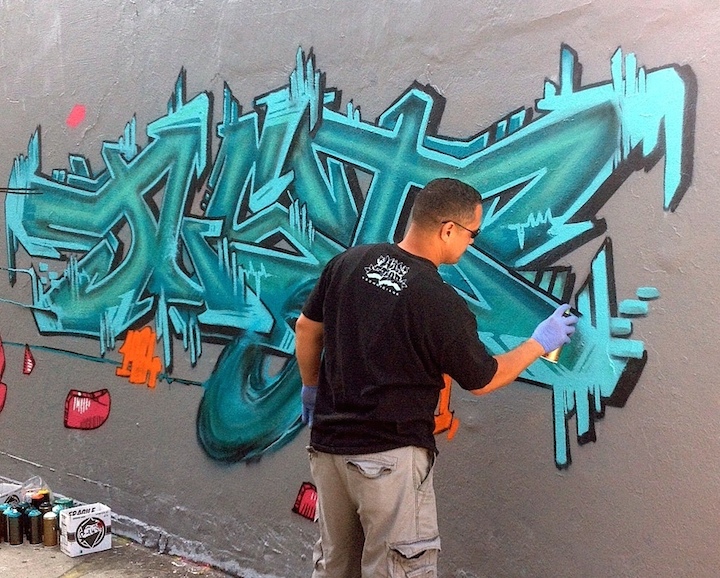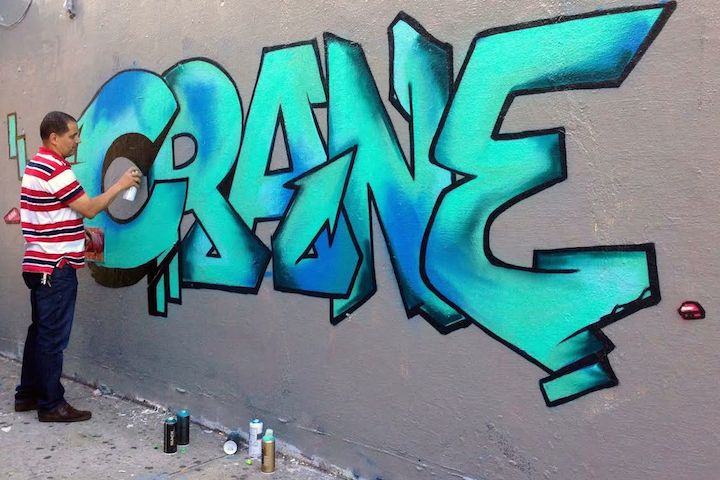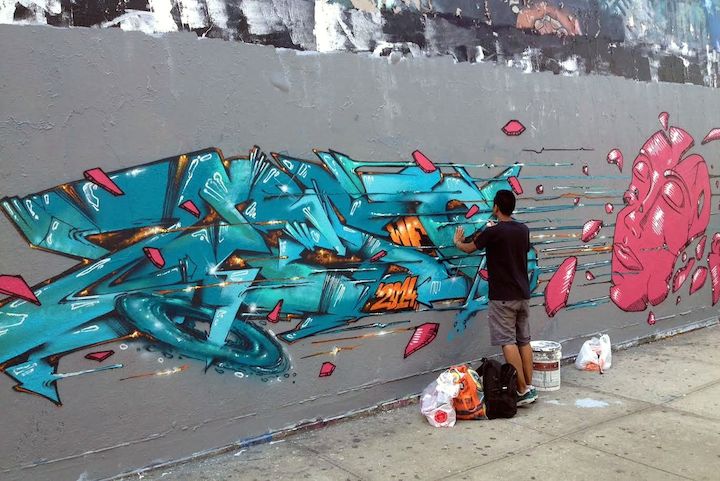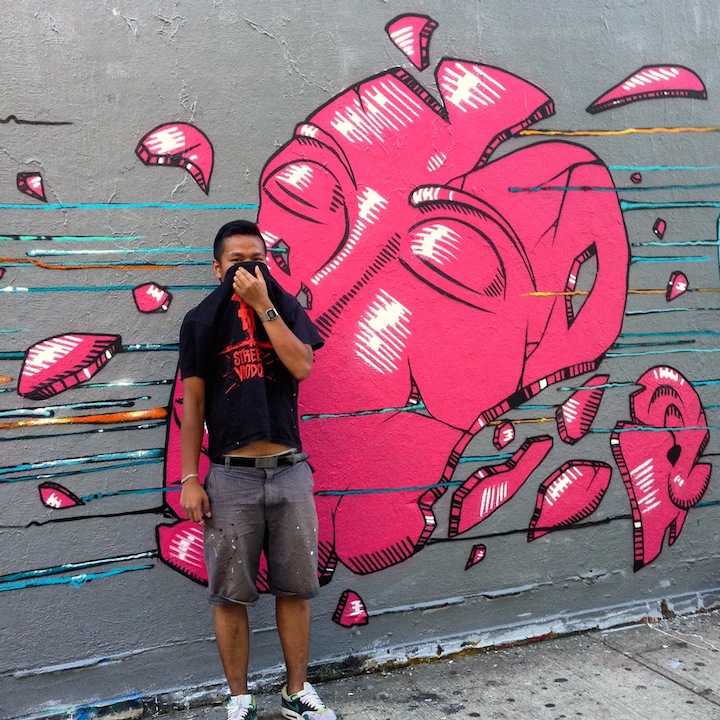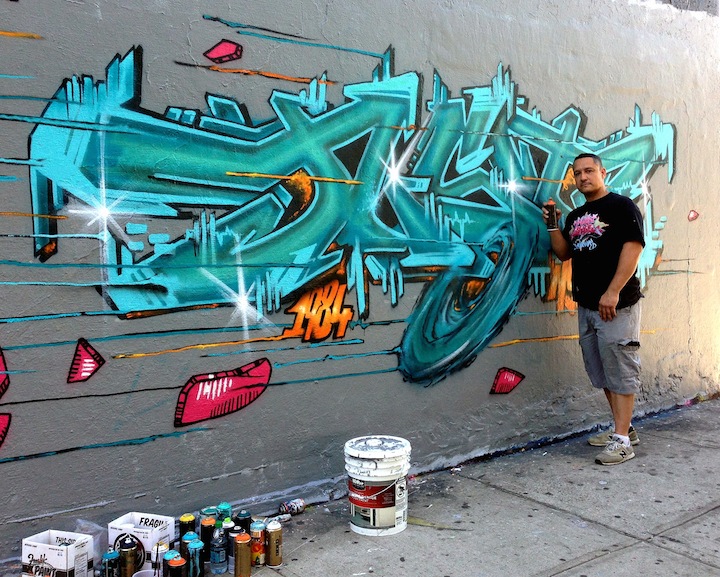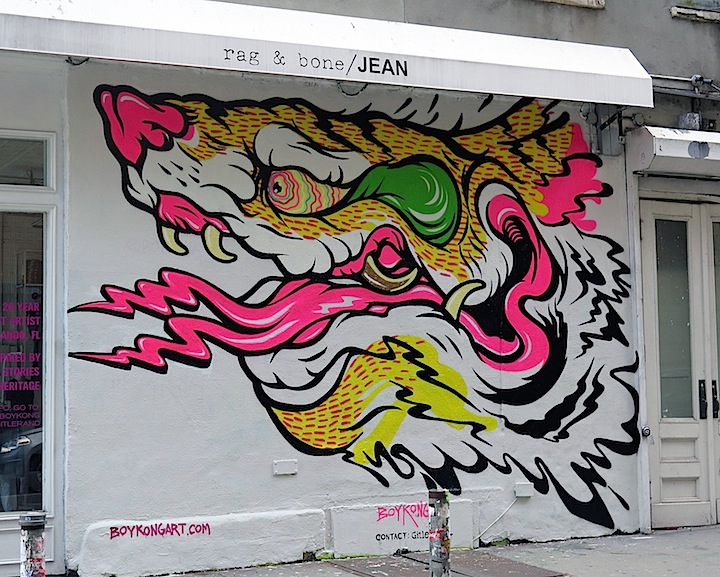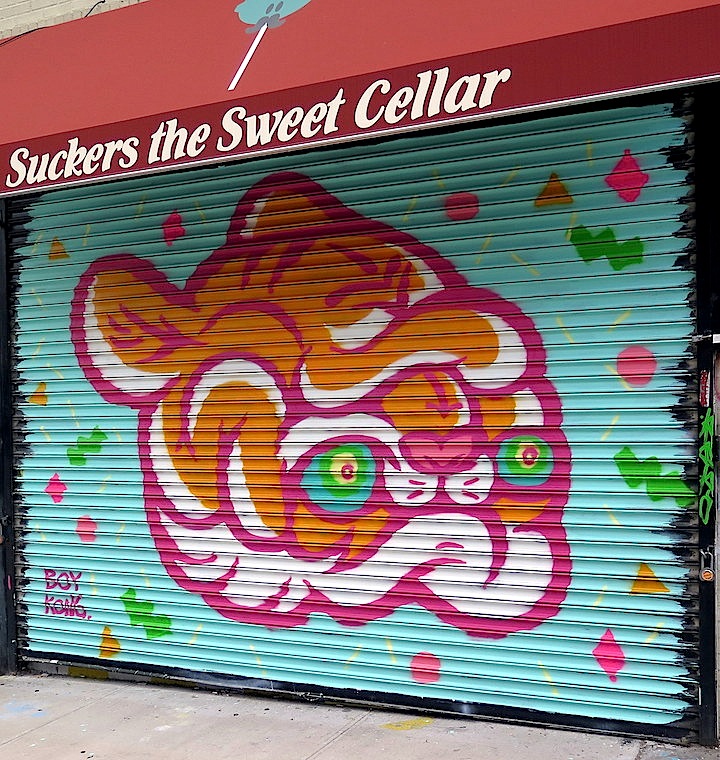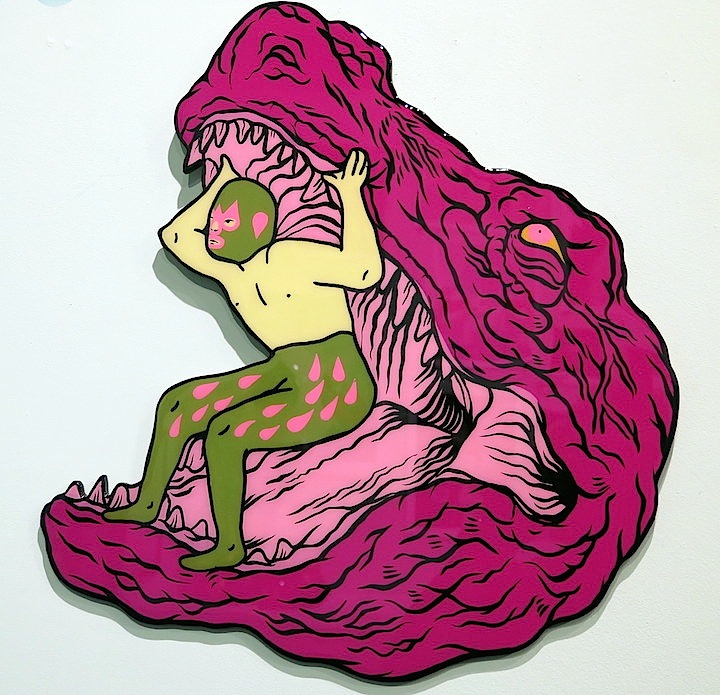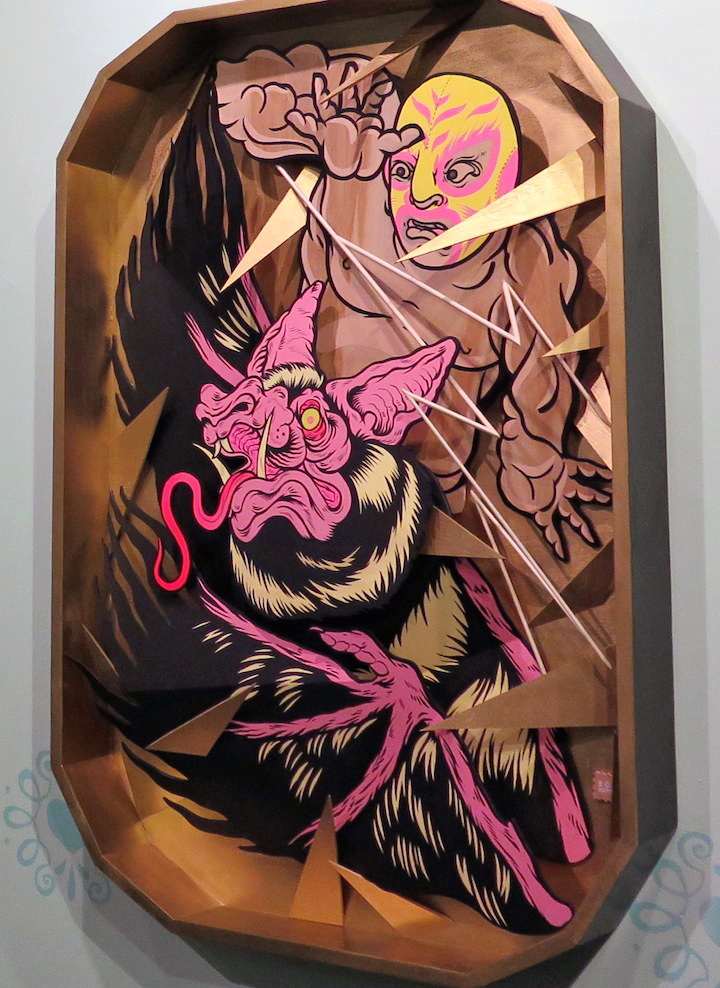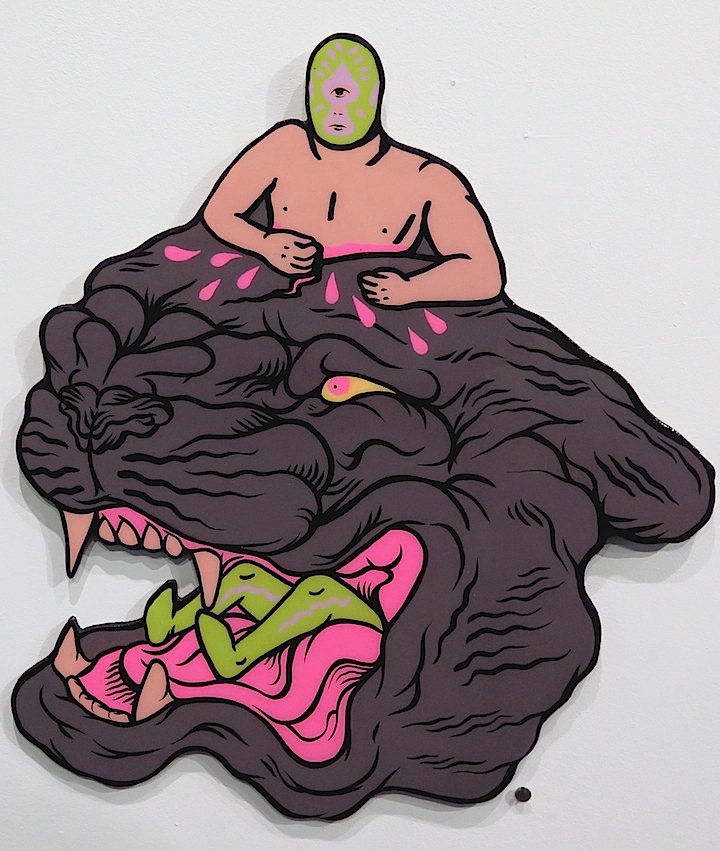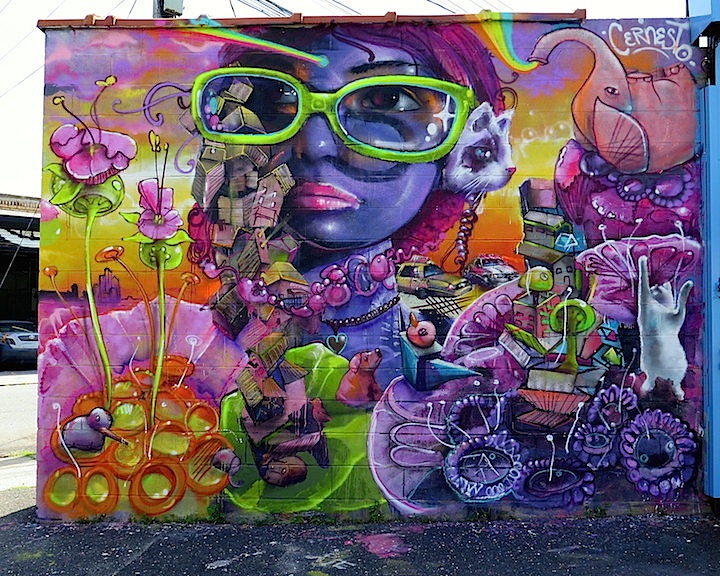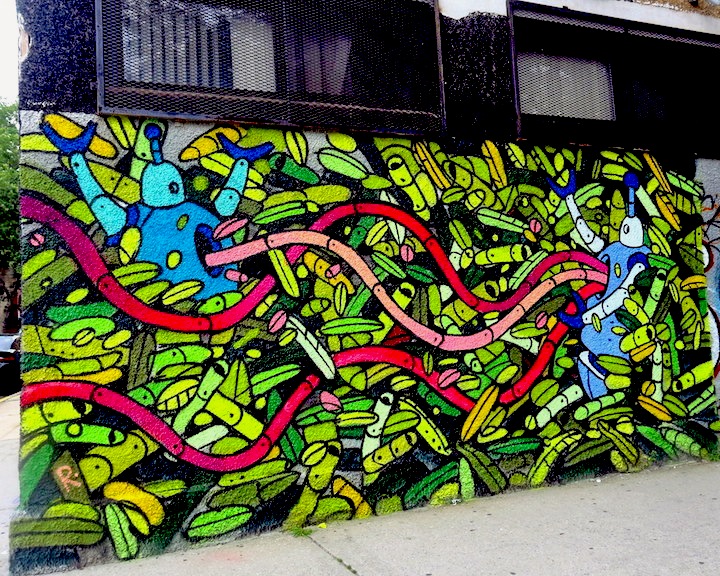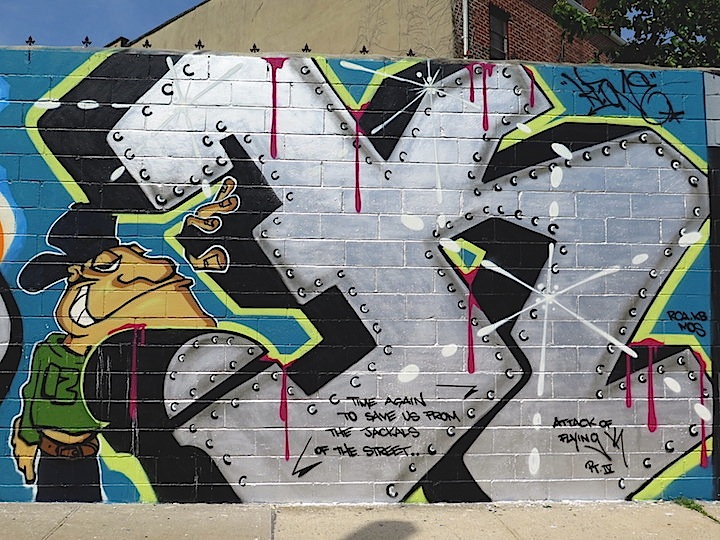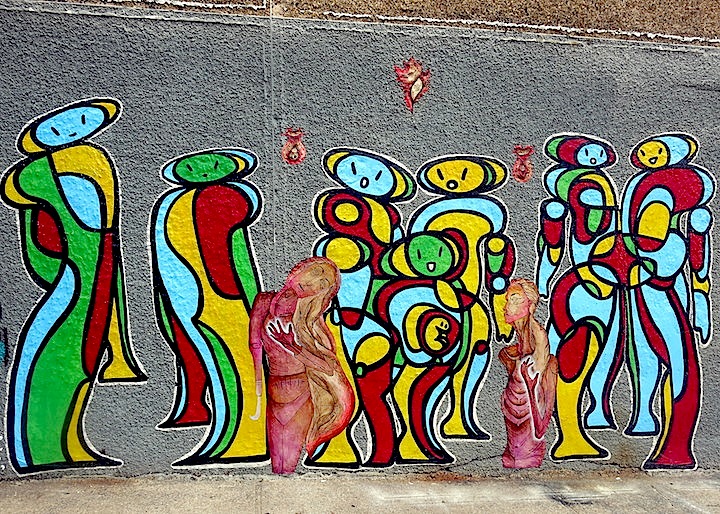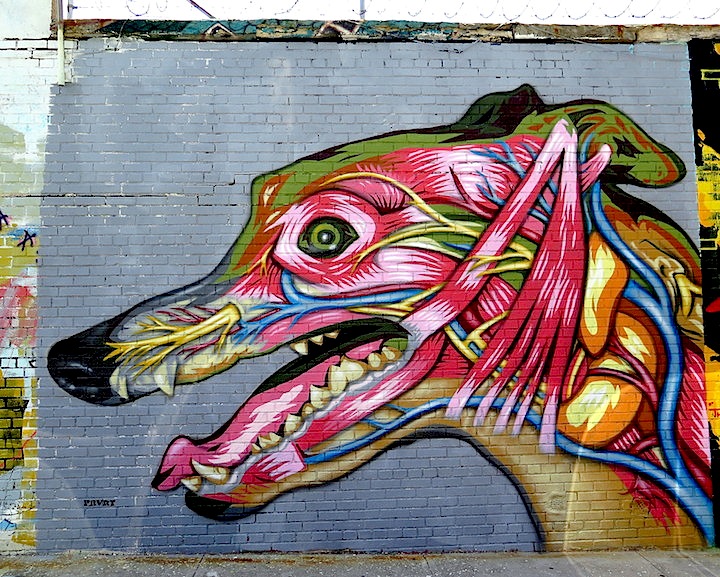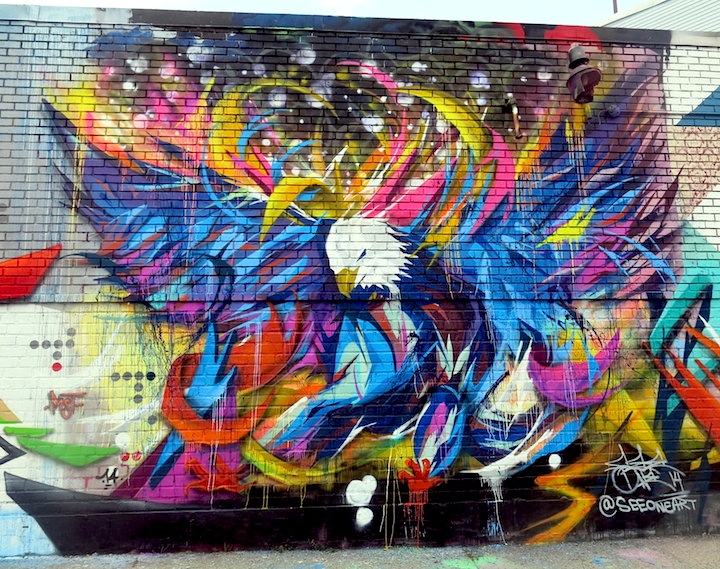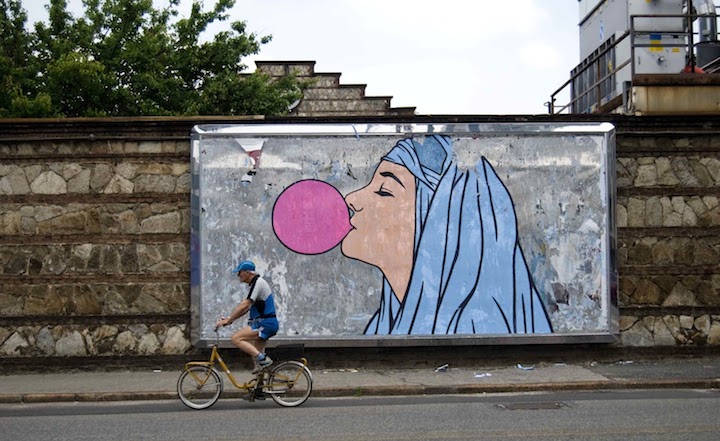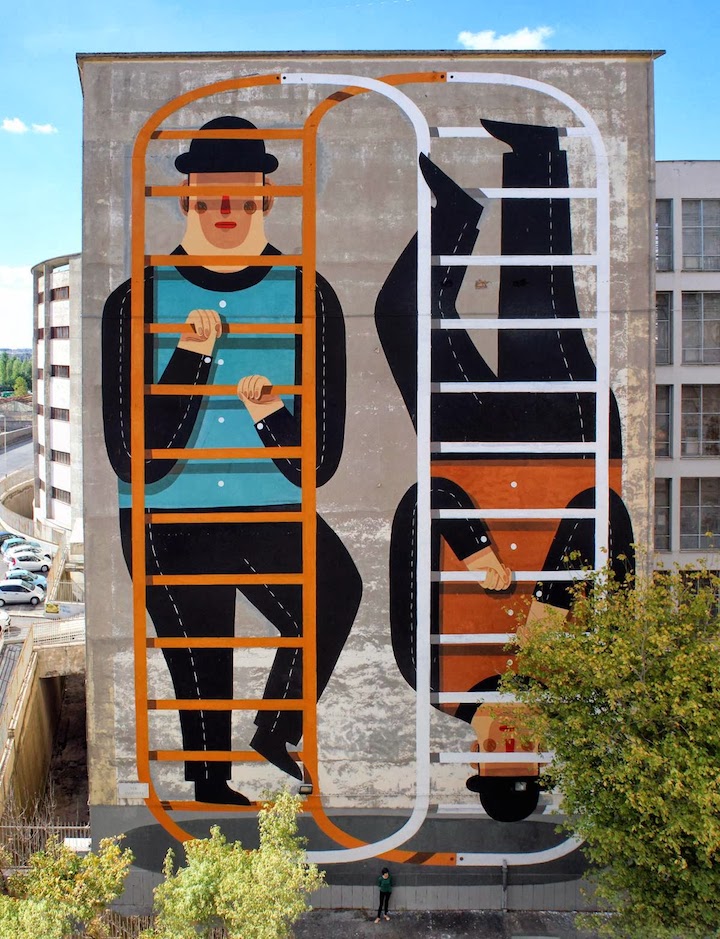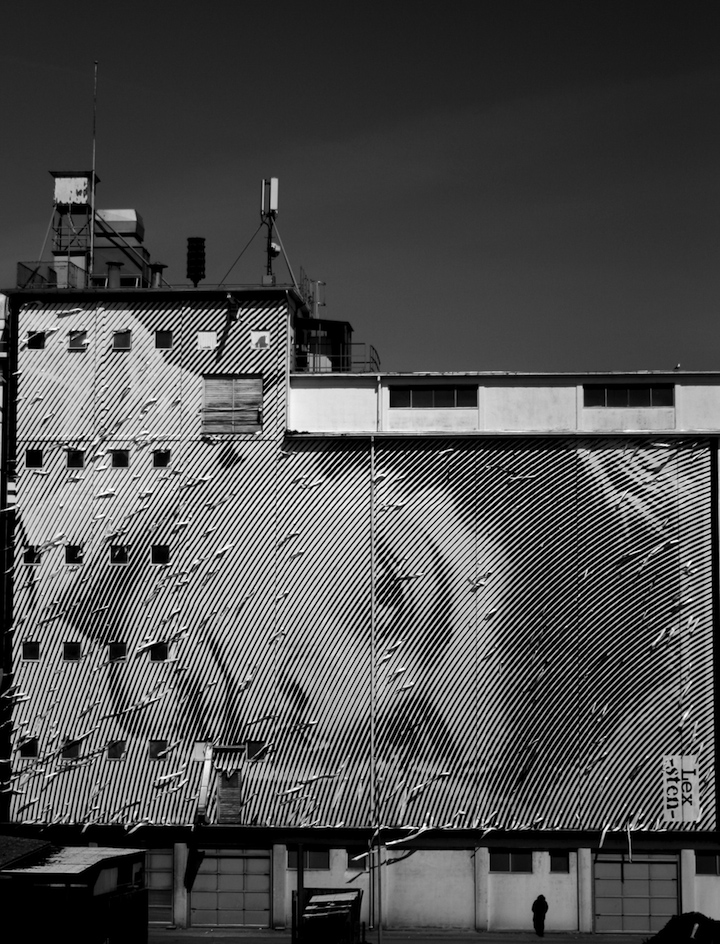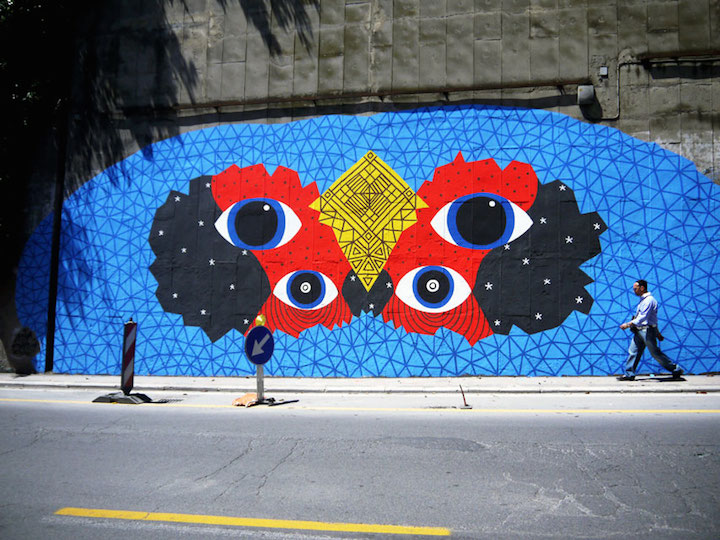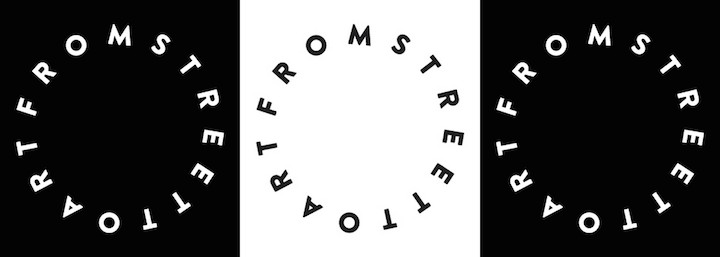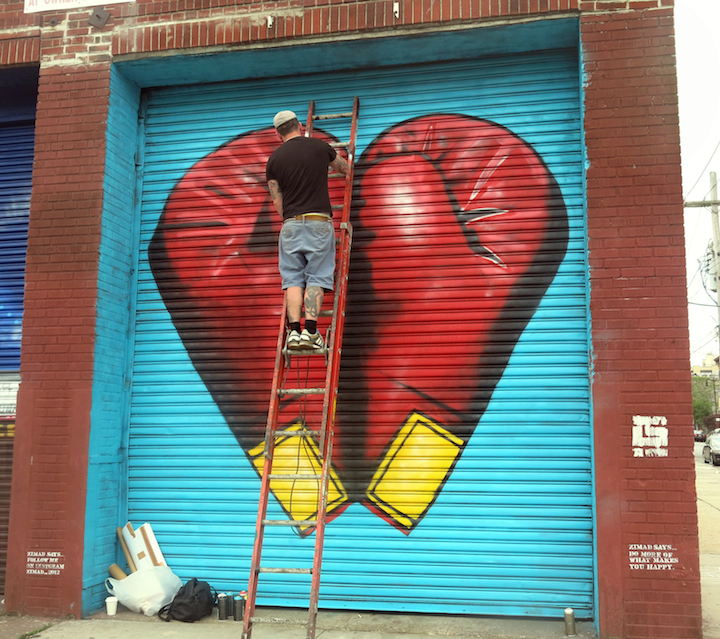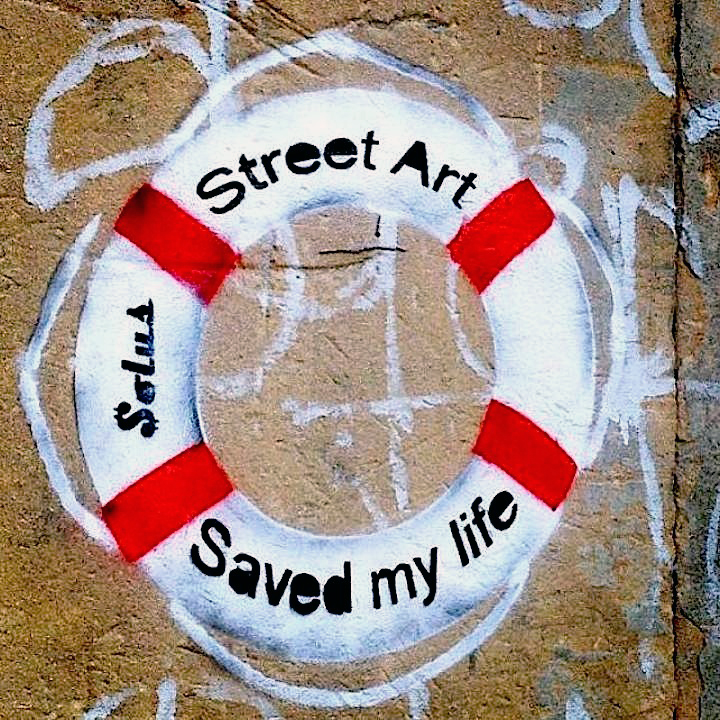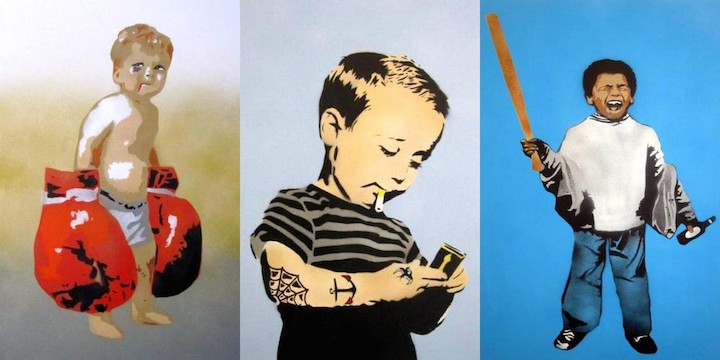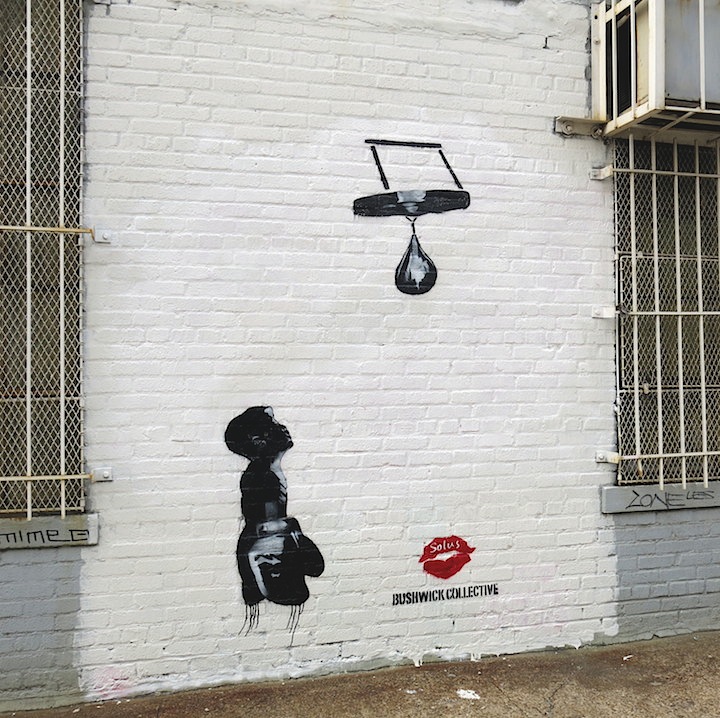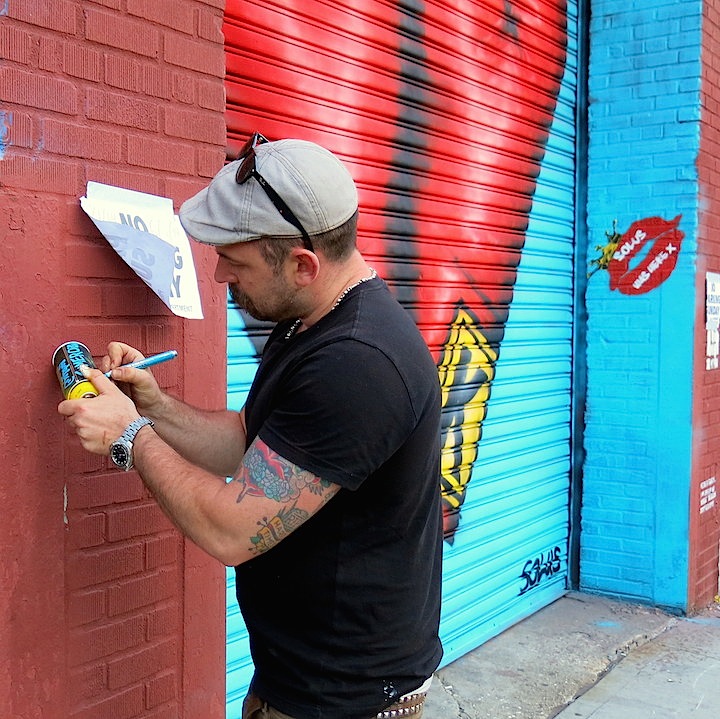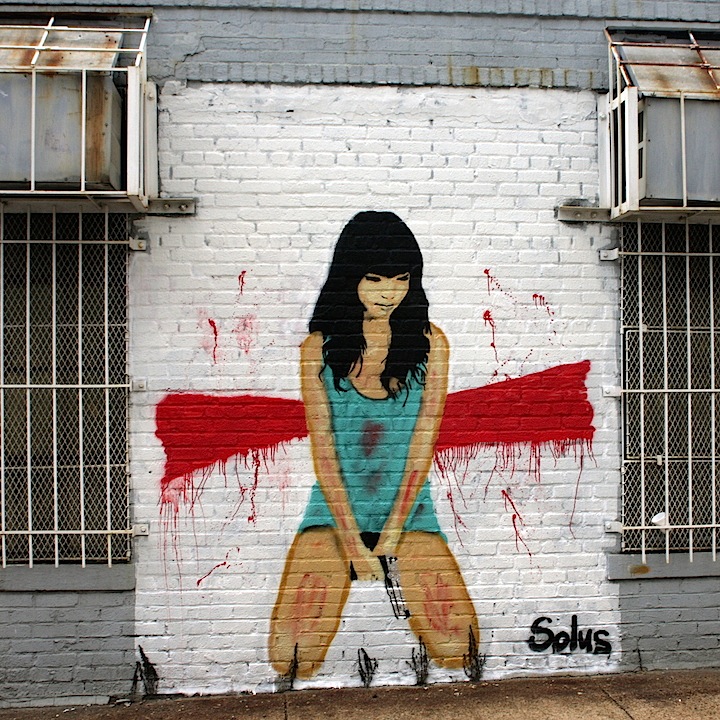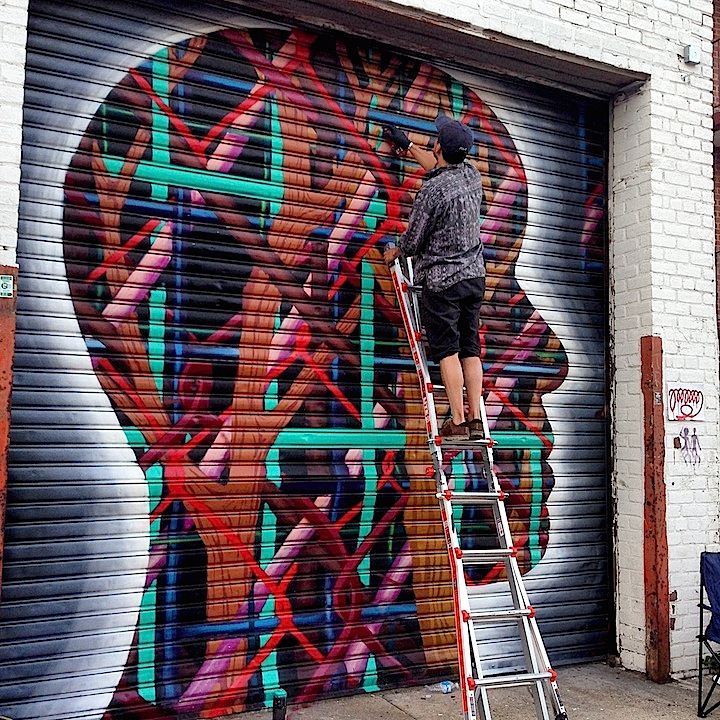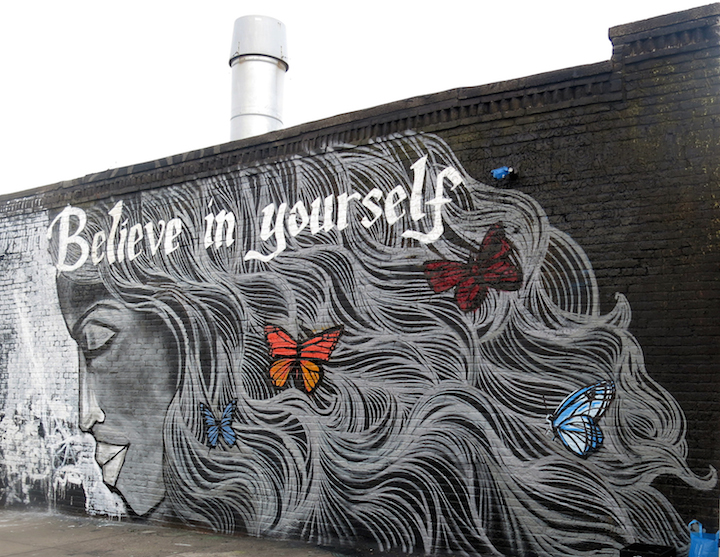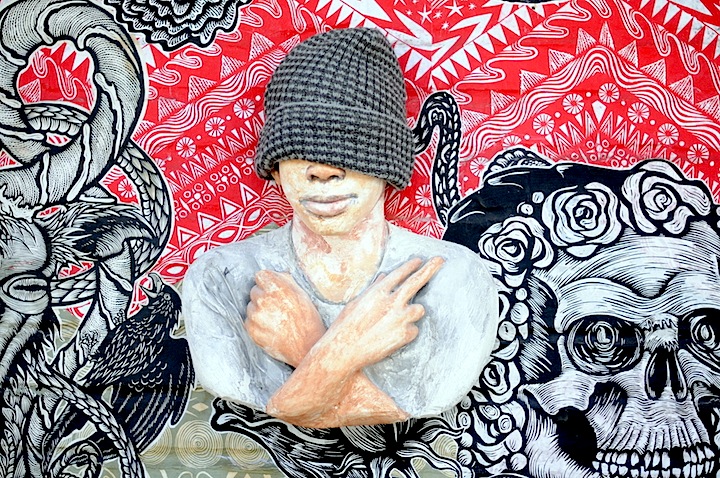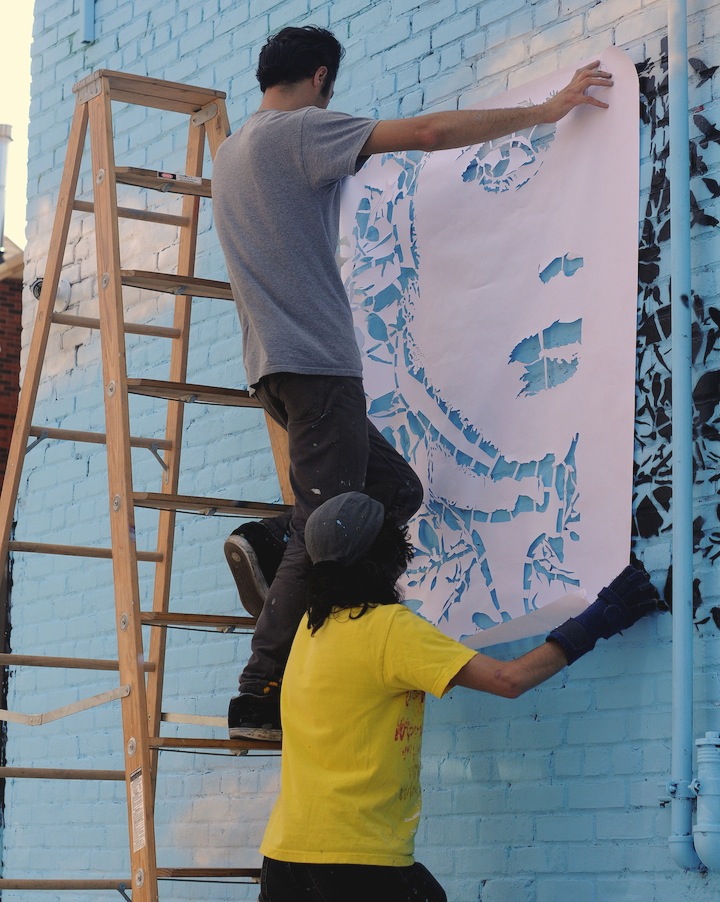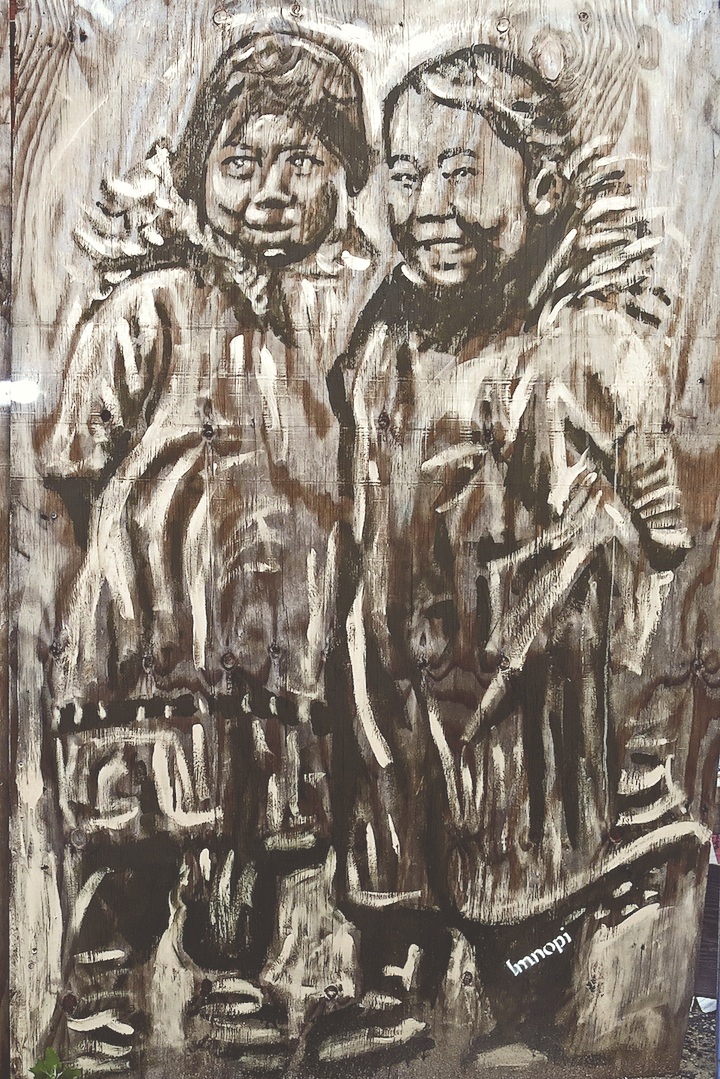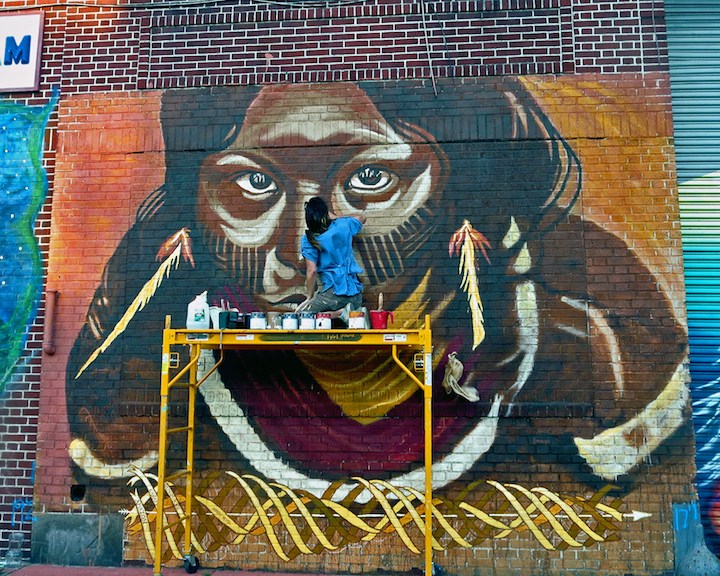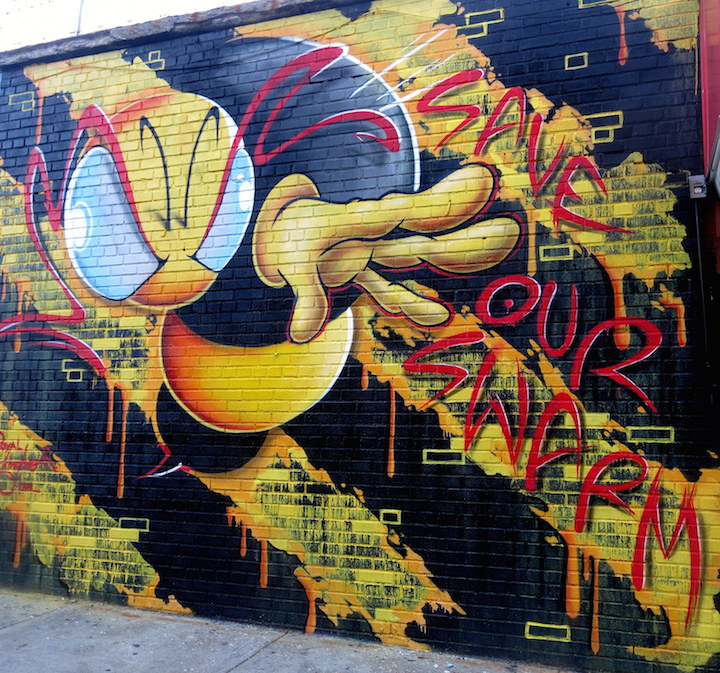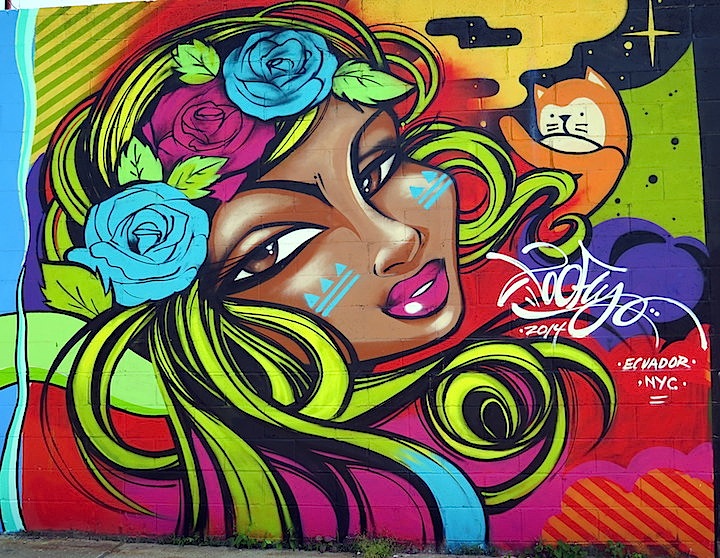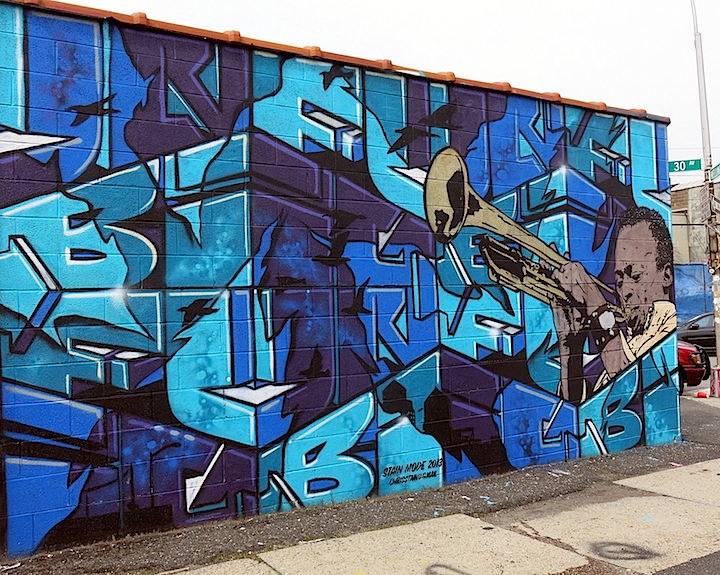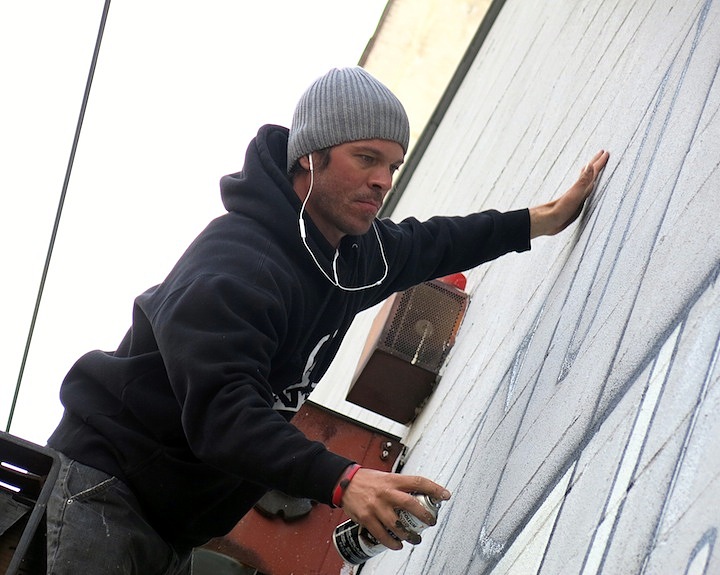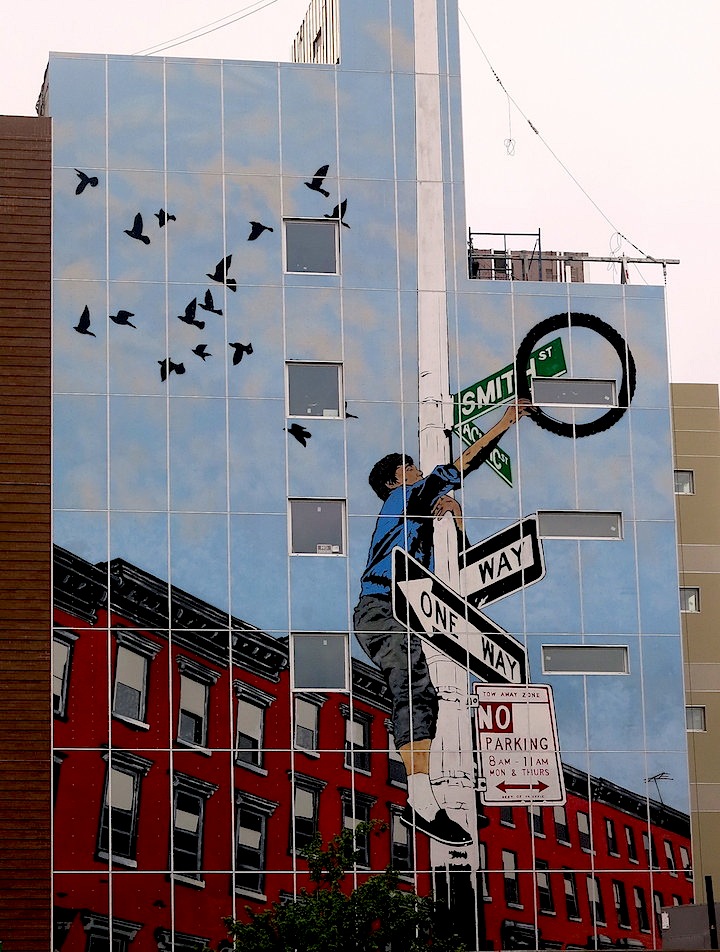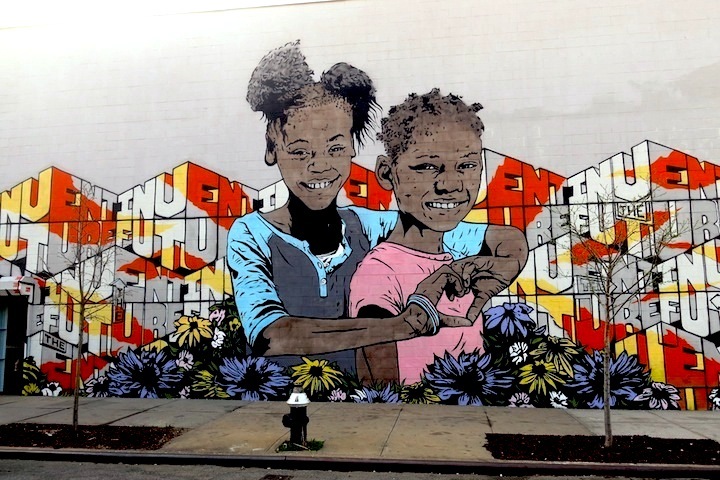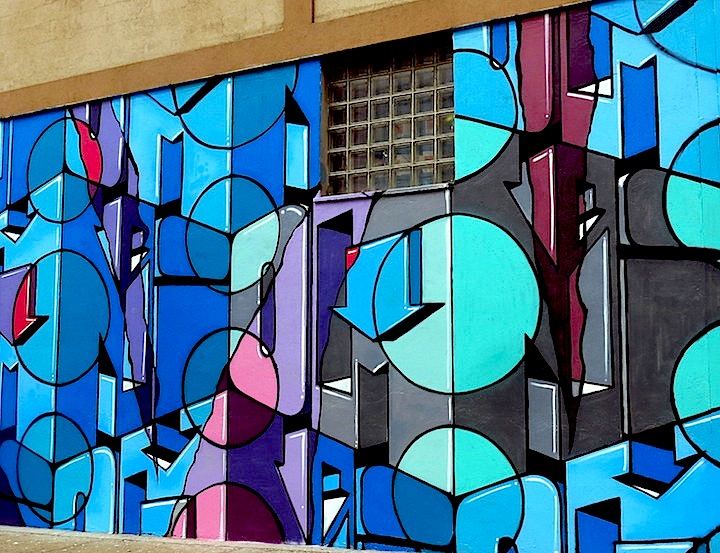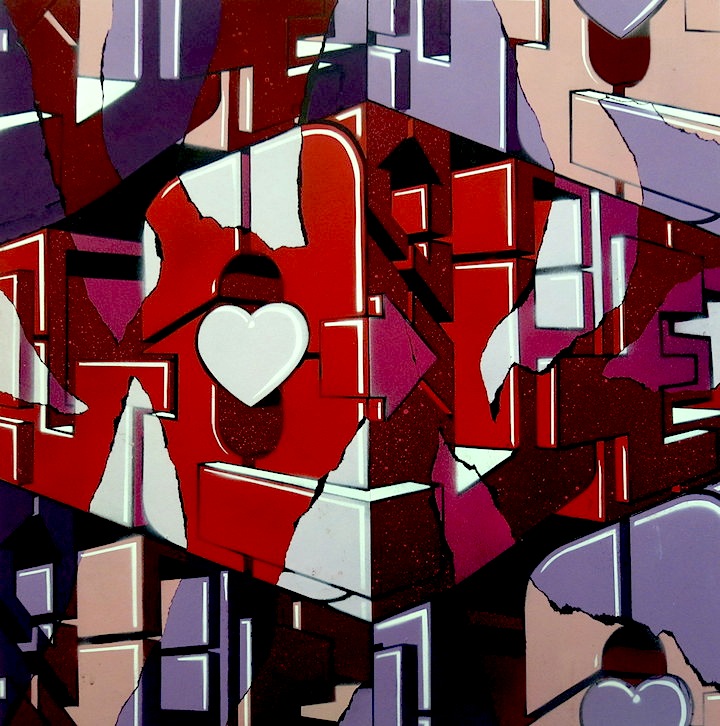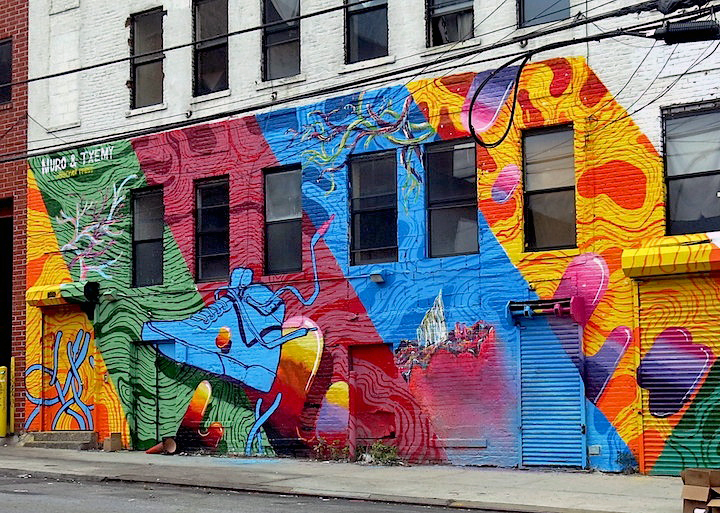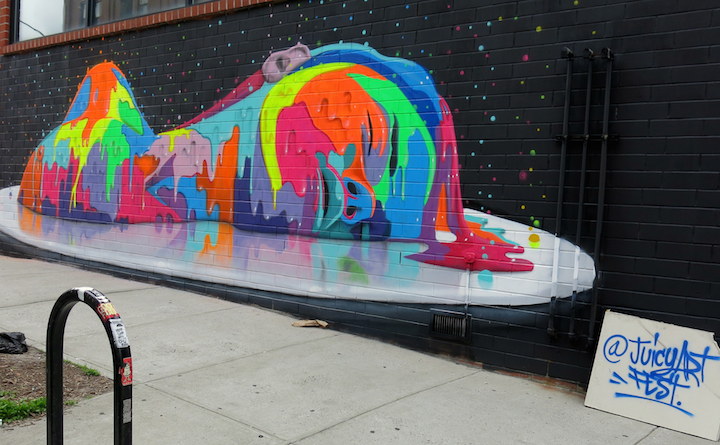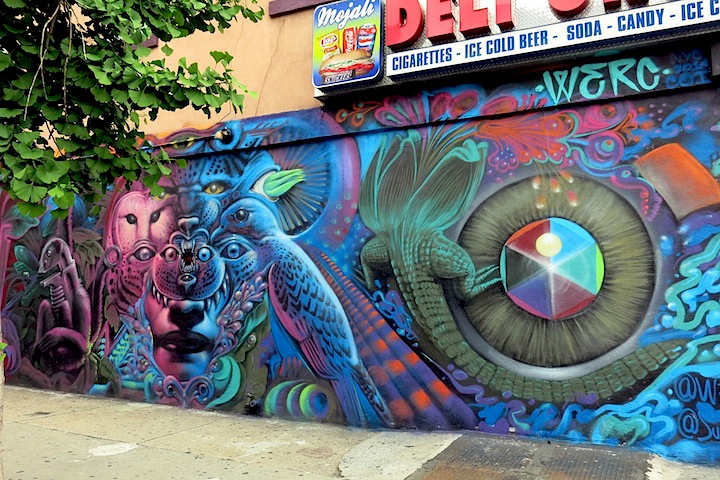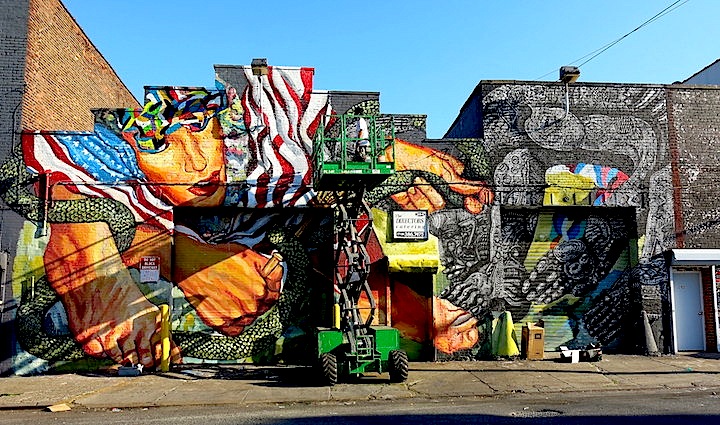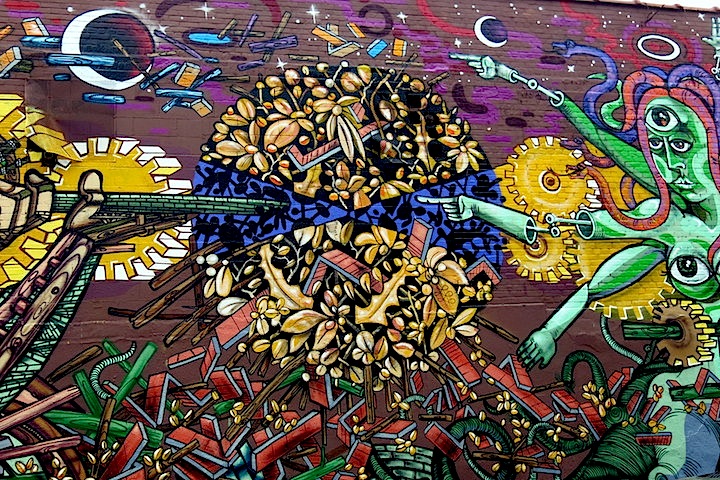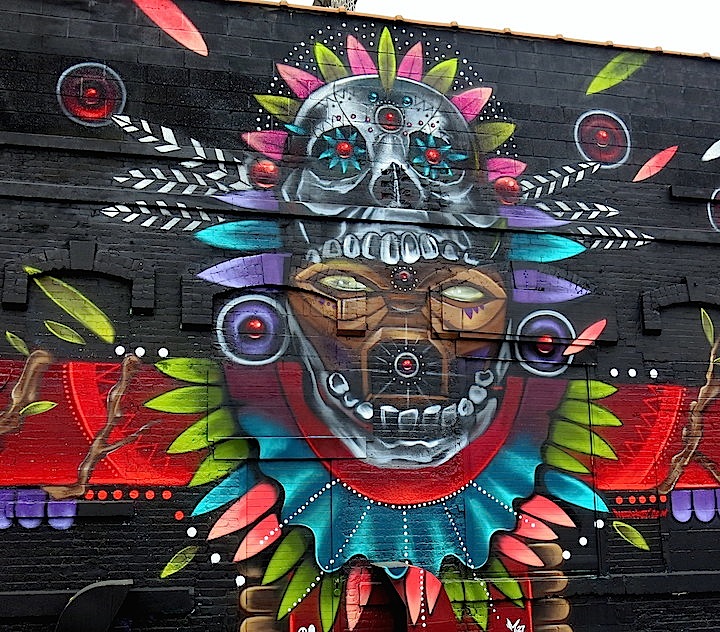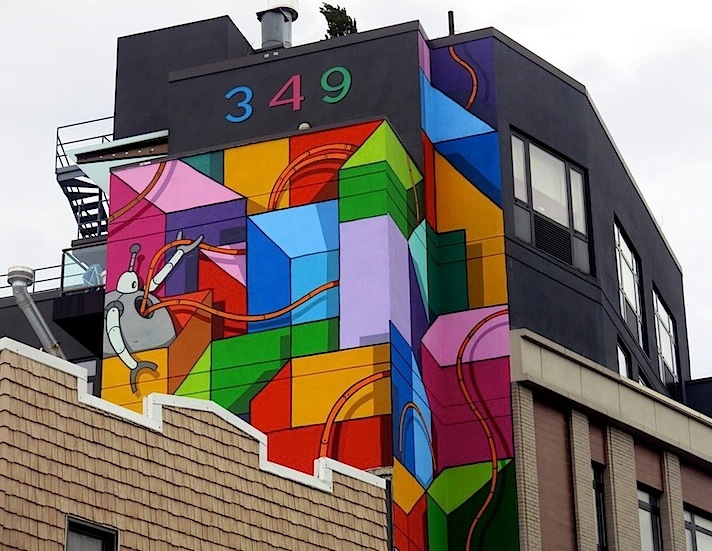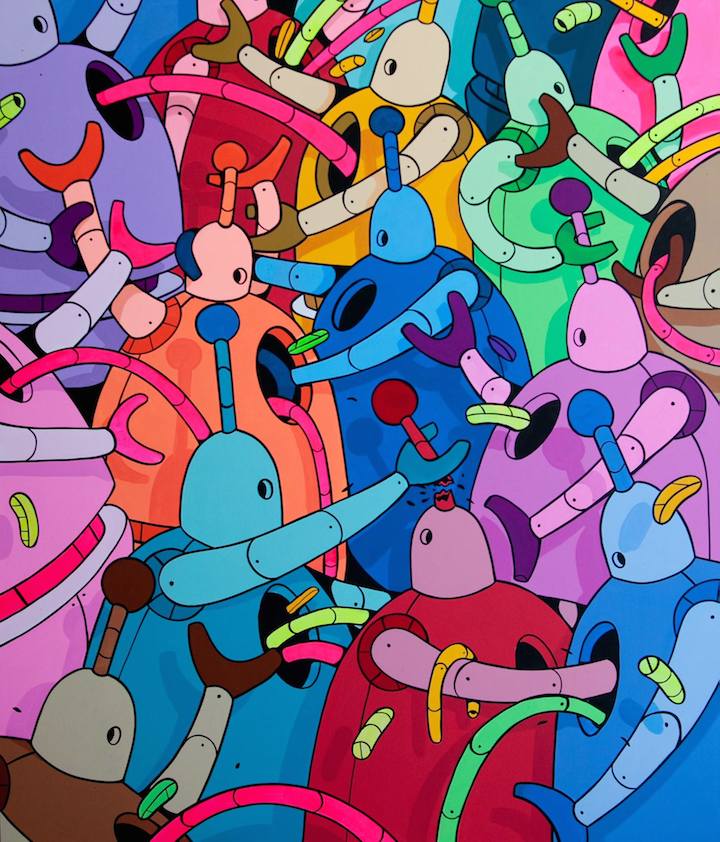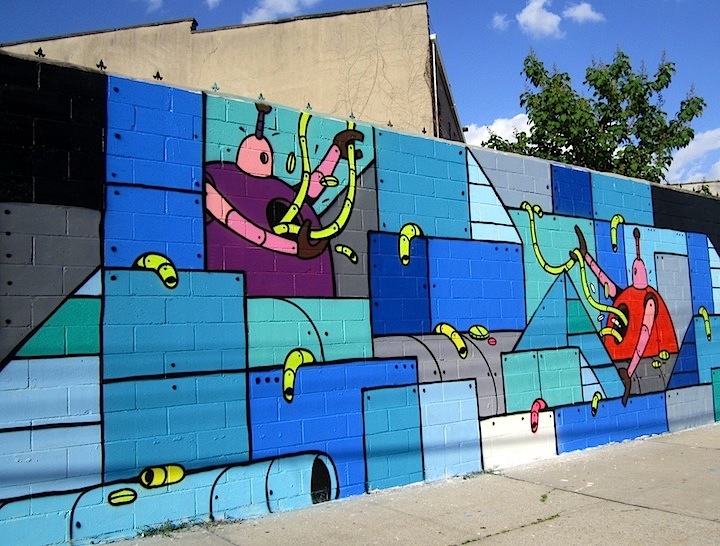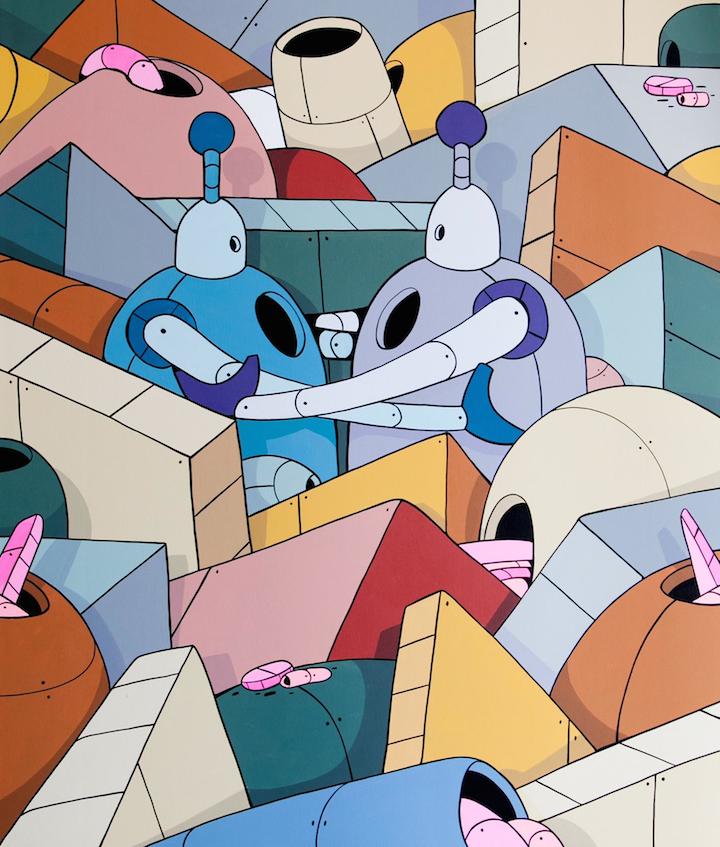Huge fans of Shiro’s vibrant, playful aesthetic, we were delighted to meet up with her this past week at SoHo’s gallery nine5, where she will be participating in the gallery’s summer show, GROUP INK.
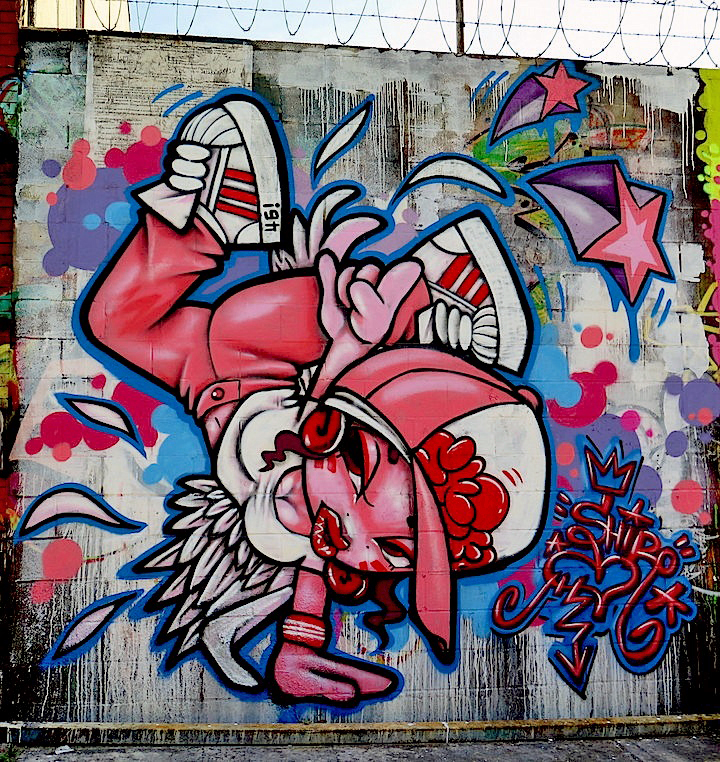
When and where did you first get up?
Back in 1998 in Shizuoka, Japan.
What inspired you at the time?
I remember seeing a video with graffiti as the backdrop. I was impressed! And soon after, I saw the movie Wild Style.
Any early memories stand out?
I remember having to create my own tools. I couldn’t get hold of any spray paint in aerosol cans at the time, and so I had to be inventive. I mostly used hair spray and mosquito spray containers that I filled with paint.
How did your family feel about what you were doing?
At the time my mother didn’t understand it, but now she appreciates it.
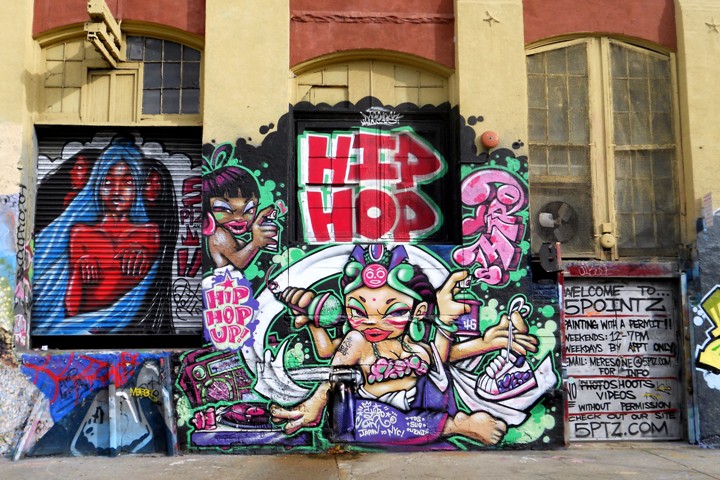
What percentage of your time is devoted to art?
When I am in NYC, 100%. But back in Japan, I work as a nurse, and I can’t devote as much time to my art as I would like to.
Wow! A nurse and a graffiti writer!
Yes, a nurse heals, and so does art.
Have you exhibited your work in galleries?
I’ve shown my work in galleries in the U.S., Germany and Japan. And I’ve participated in projects in India, China, Australia, New Zealand and the Philippines.
Have you any thoughts about the movement of graffiti and street art into galleries?
I’d rather paint on a wall than on a canvas. But when I create work for galleries, I learn and perfect new techniques.
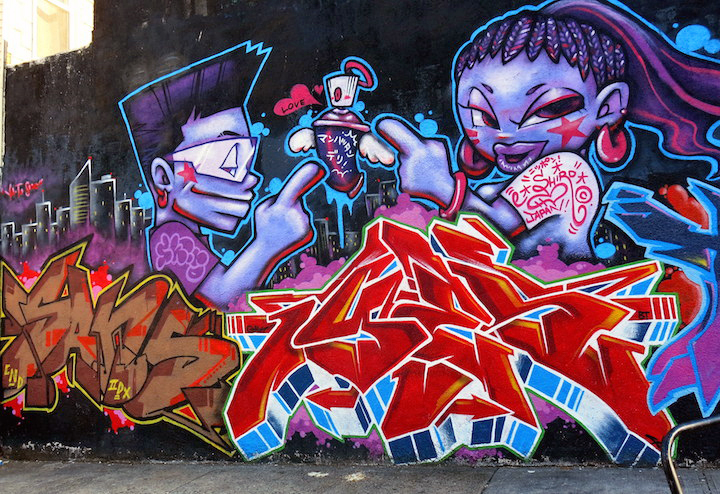
What inspires you these days?
I’m inspired by my own experiences in different situations…and by my imagination. In my art I can be anything!
Are there any particular cultures that have influenced your aesthetics?
The entire graffiti and hip-hop culture, along with, I suppose, my Japanese roots.
What is the riskiest thing you ever did?
I hadn’t planned it to be risky. But back in 2002, I found a deserted wall in Forest Hills, Queens that I thought would be the perfect canvas for me. As I began painting, a group of boys suddenly appeared and stole my spray paint. One of them had a gun. Soon they were hurling stones and although they weren’t aiming the stones at me, some rocks did hit me and injured me.
Gee, that sounds traumatizing. Do you generally paint alone?
I love painting alone. I am very independent! But I’ve also painted with crews and collaborated with other writers.
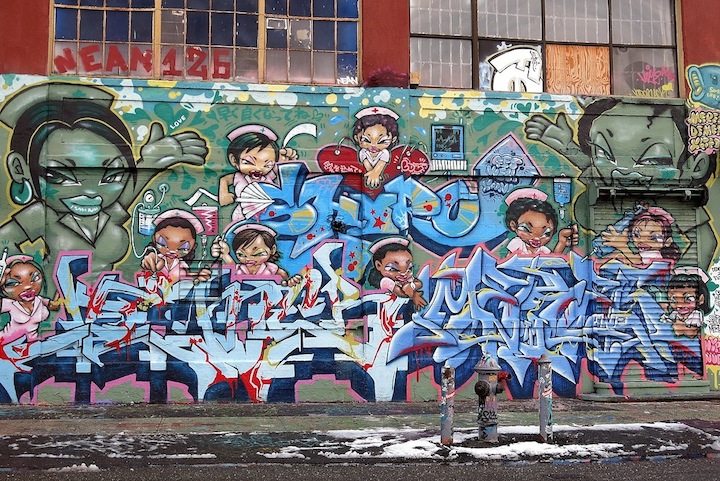
What are some of the crews you’ve painted with?
TDS (The Death Squad), SUG (Stick Up Girlz), FX and UZNJ (Universal Zulu Nation Japan)
What’s it like being a female writer in what is so much of a man’s world?
I forget about gender when I’m painting. It’s irrelevant.
Do you work with a sketch in hand or do you just let it flow?
Sometimes I work with a sketch; other times I just let it flow.
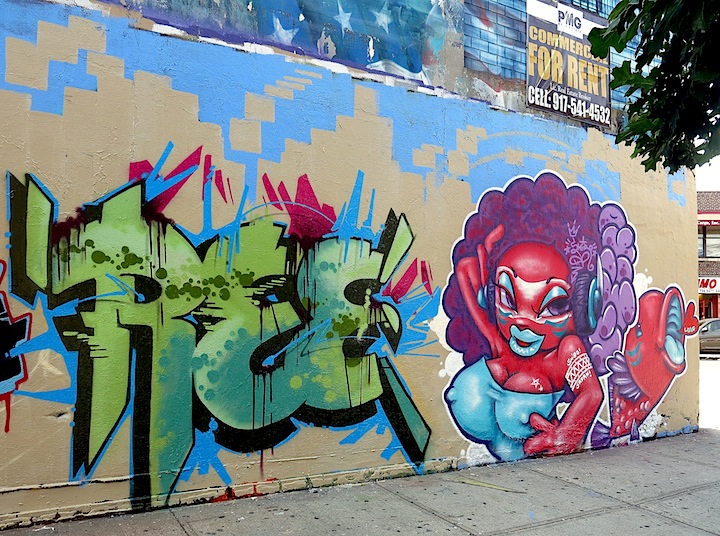
Are you generally satisfied with your finished piece?
I mostly feel very happy with it!
How has your work evolved through the years?
It is more detailed, and I paint more quickly. I’ve developed much better can control than I had earlier.
What’s ahead?
I just got my artist’s visa, and so I’m looking forward to spending more time here. I will just go with the flow!
Note: Shiro will be participating in gallery nine5‘s summer show, GROUP INK. Along with TATS CRU, Bisco Smith, Alan Ket, Vor138 and Rubin415, she will be transforming the private space over at 24 Spring Street into a public one. It all begins today, Wednesday, June 25 with TATS and bare walls! Keep posted to our Facebook page for updates.
Photos: 1. Welling Court Mural Project, Dani Reyes Mozeson; 2. 5Pointz, Tara Murray; 3. With Sans, Tone and Yes One in Greenpoint, Dani Reyes Mozeson 4. With Meres and Demer at 5Pointz, Dani Reyes Mozeson & 5. On uptown wall with Ree on right in Inwood, Lois Stavsky
